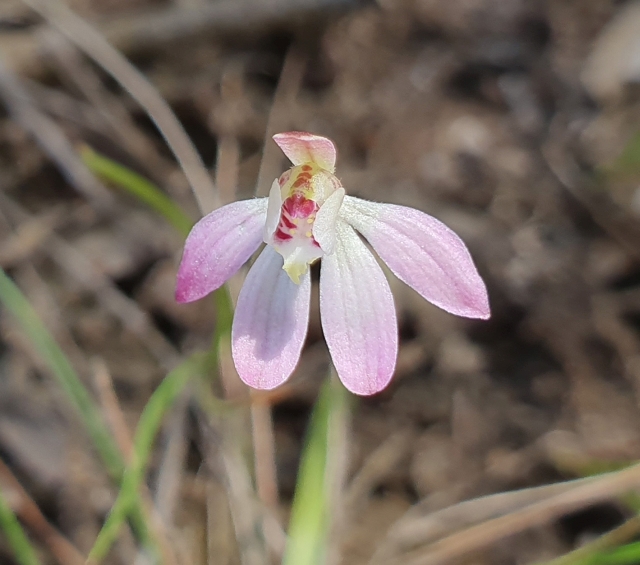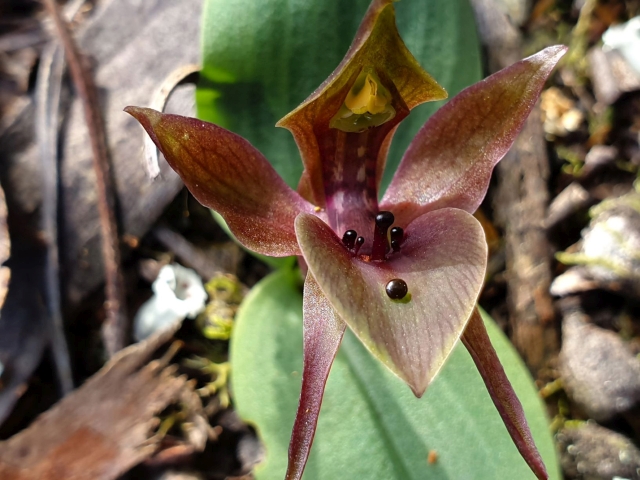It has been another wonderful month to be out observing orchids. The most exciting highlight has been the sighting of Brown Beaks, Lyperanthus suaveolens.
This rare orchid hasn’t been seen for years in our area, and a chance sighting on iNaturalist and a phone call alerted us to these attractive flowers. The green to brown flowers with inrolled sepals and petals, upcurved petals and dorsal sepal hooded over the column, have unusual long, strappy leaves. The site where they have appeared is characterised by introduced Sugar Gums with an understorey of Dianella, and the orchids are well camouflaged amongst the leafy Dianellas.
 Brown Beaks
Brown Beaks
The Large White Spider Orchid, Caladenia venusta, is putting on the most outstanding display especially in recently burnt areas—we have never seen such amazing displays and numbers. Some specimens are standing 60 cm tall.
Donkey Orchids, Diuris orientis, are also putting on lovely displays with some pure yellow stands.
 Donkey Orchids
Donkey Orchids
White Fingers, Caladenia catenata, are now appearing in many different areas where they have not been seen before. There are also some that seem to be hybridizing with Pink Fingers, C. carnea.
Many small Tiny Caladenia, C. pusilla, in various shades of pink are appearing in various areas.
 Tiny Caladenia
Tiny Caladenia
Similar to these are Cryptic Fingers, C. mentiens. The main differences are Tiny Caladenia have rounded petals where Cryptic Fingers have more bluntly pointed petals. Tiny Caladenia are shorter and have a stronger stem, while Cryptic Fingers has a tall, very fine stem.
Beautiful Eastern Bronze Caladenias, C. transitoria, are worth looking out for. They are quite small and bronze coloured, and do not last long, hence the name transitoria.
 Eastern Bronze Caladenia
Eastern Bronze Caladenia
Southern Bearded Greenhood, Pterostylis tasmanica, is now appearing in many places. It differs from P. unicornis in that the hood is not as pointed and the lateral sepals are close together and often joined. The labellum is more densely covered with yellow hairs than that of P. unicornis.
Common Bird Orchids, Chiloglottis valida, are also flowering beautifully now. They form large, dense colonies.
 Common Bird Orchid
Common Bird Orchid
Onion Orchids, Microtis sp., are out and a magnifying glass is needed to distinguish the minute details. Look carefully at the tiny labellum.
Many sun orchids are ready to flower when the weather is warm and sunny. However, many flowers have unfortunately already self-pollinated due to the cool conditions and will therefore not open. Look out for Leek orchids, Prasophyllum sp., which are starting to put up their flowering spikes. The Flying Ducks, Caleana major, are starting to flower, and Bearded Orchids also.
Take care as you walk as our terrestrial orchids are so precious and easily trampled on. Please let us know of any of your orchid finds. They are all documented and photographed in Orchids of the Anglesea District available from Angair.
Alison Watson and Margaret MacDonald